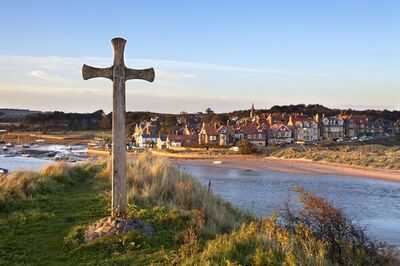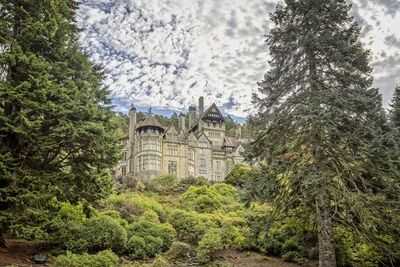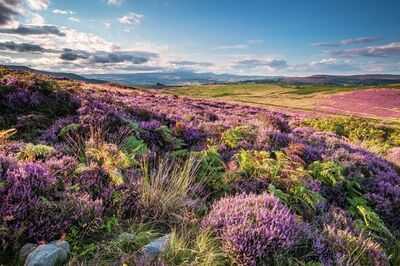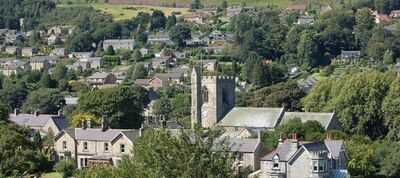"Do you know what is my favourite thing about London? Getting on the train at King's Cross and knowing you're coming home to Rothbury," Cllr Steven Christopher Bridgett says.
Speaking to the Express, the non-aligned Rothbury councillor has plenty of praise for the North East England town, which has a population of around 2,000. "It's just magic. Although yes, people live here, it's relatively untouched to a certain extent in the way some of your larger cities and more urban areas are."
For those living in big cities, the town is a far-to-reach destination. Indeed, the six-hour drive from London can be off-putting, as can the three-hour journey from Manchester. But even getting to the town is, according to Mr Bridgett, a unique experience.
"You can travel over from Alnmouth to Rothbury on one of the most scenic drives in Northumberland, with some absolutely beautiful landscapes that you'll come into contact with," he says.
Rothbury is a small town known for its picturesque setting in the Coquet Valley and as a gateway to the Northumberland National Park. Listed as a market town in 1291, it features a historic sandstone high street with independent shops, pubs, and art galleries. Offering stunning walks and cycling routes, the little-known town attracts millions of visitors every year.

The town's main attraction is without a doubt Cragside, the 19th-cenury grand country house and a National Trust property. It is home to one of Europe's largest rock gardens, which tumbles down a valley near the house. Created by the Victorian engineer inventor Lord William Armstrong, Cragside is the first house in the world to be lit by electricity derived from water power - hydroelectricity. Its innovative features, like water-powered lifts, heated floors, and hydraulic gadgets, create a unique blend of technology and natural walks.
"It's a 'wow factor' property," Steve Howard, Cragside's Visitor Operations Manager, tells the Express, claiming that the site had a record 258,000 visitors last year.
"We estimate about seven million trees and shrubs in this area. Lord Armstrong created waterfalls, man-made lakes that help power the house as well. It's a very unique property. It's also a very challenging visitor operation property, as it's built on a crag," he adds.
The site was used as a filming location, appearing in the Jurassic World franchise and more recently hosting Danny Boyle's production of 28Days Later.

Local Chris Brooking moved to Rothbury from West Yorkshire to retire, and although he had previously lived in a village, it was "nothing like Rothbury".
He tells the Express: "Living somewhere like this changes your perspective. When I visit the village I used to live in I realised that a supermarket that we called 'little Tesco's' is actually bigger than the Morrisons or Sainsbury's in Alnwick, our closest supermarkets, which are a 12 mile drive away. The store we called 'Big Tesco's', a few miles from where I used to live seems absolutely huge to me now."
For the hill enthusiast, one of Rothbury's greatest advantages is its easy access to scenic walks, with routes leading straight from people's homes up to the stunning Simonside Hills. Travelling further north, he explains, walkers can cross vast stretches of unspoilt moorland and "walk for hours before reaching even a small road."

Mr Brooking also appreciates Rothbury's proximity to historical sites and the Northumberland coast, which is recognised as an Area of Outstanding Natural Beauty. Another key attraction, he says, is the warmth of the local community. Owing to its remoteness, there is a strong sense of connection, with "lots of clubs and interest groups right in Rothbury," unlike his previous home, where he had to travel into Bradford or Halifax for similar activities.
"I think anyone would have a good time in Rothbury for a holiday. For living here long term I think there is a more of a decision to make.
"I love being in the hills and being able to drive to the coast in under an hour. Others might prefer to live on the coast and drive to the hills," he adds.
The small town also stands out compared to many other Northumberland locations due to its low number of second homes, which in touristy areas often drives up prices and creates a housing crisis for local residents. In 2024, of the 1,228 residential dwellings registered for Council Tax, only 55 (4.5%) were second homes.
And, a bright future seems to await the town, as it is set to benefit from the Borderlands Place Programme, which could provide up to £3 million to fund local improvement projects.
You may also like

HYDGEN Raises $5 Mn To Scale Green Hydrogen Production

Tired of plain tea? 3 spices that can turn your tea into anti-inflammatory drink, shares AIIMS doctor

Ola Electric Slides 5% After Board Clears Fundraising Plan

Staggering cost of paying for illegal migrants simply cannot continue

'Masterpiece' BBC drama streaming free is based on 'greatest novel of all time'







